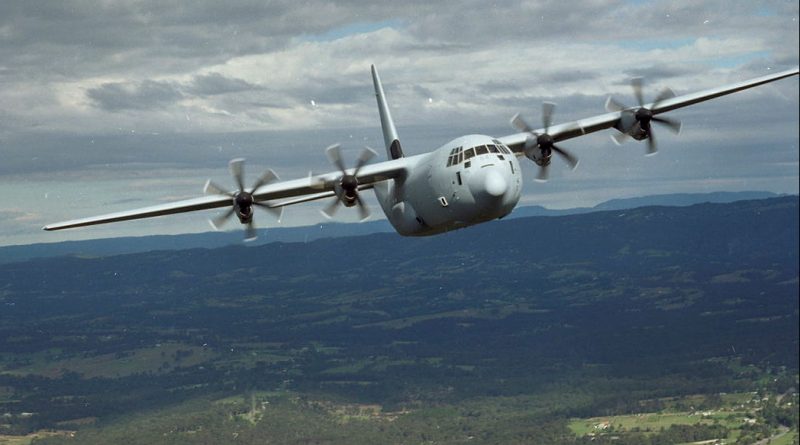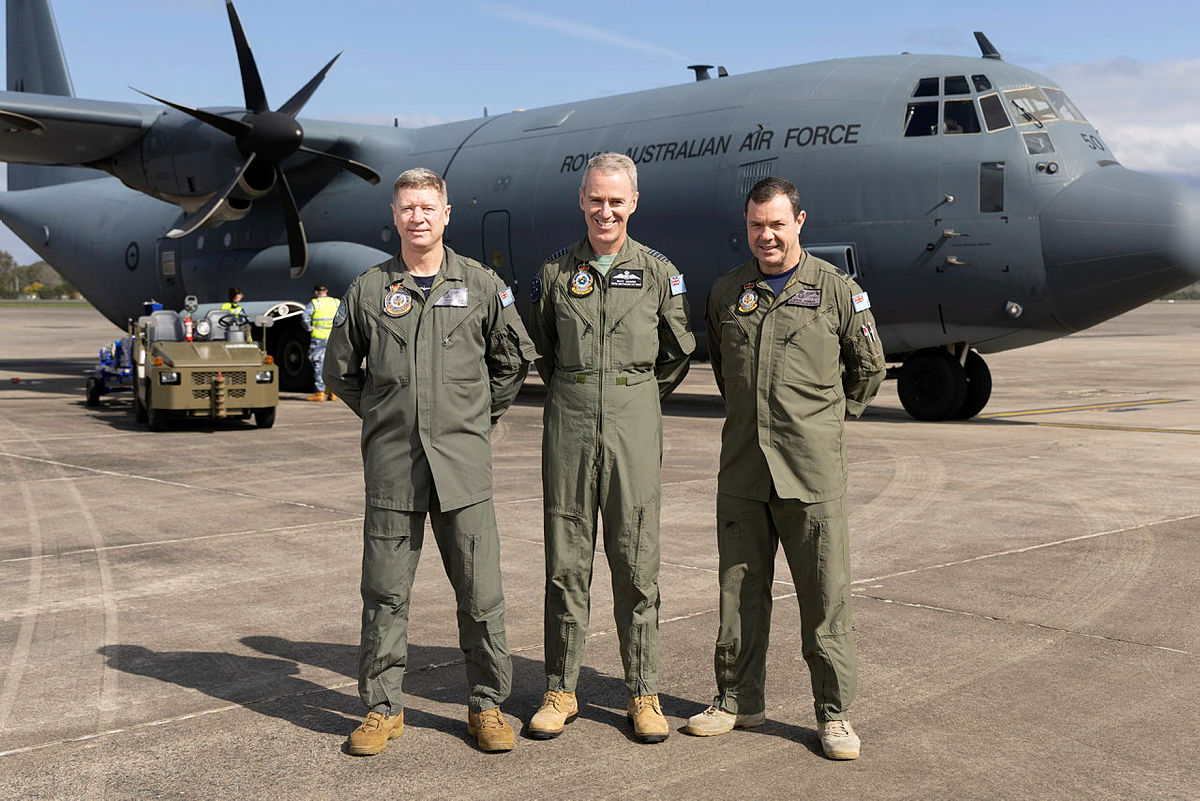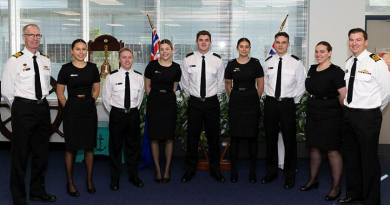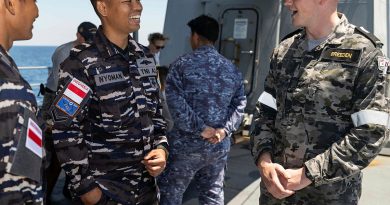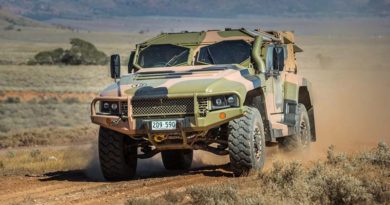Hercs reach 25-year milestone

Bigger, faster, stronger … that was the hope 25 years ago for Air Mobility Group’s addition of 12 C-130Js at RAAF Base Richmond, and they have worked tirelessly to deliver.
CAPTION: Air Force’s C-130J Hercules aircraft number A97-464 flies over the Hawkesbury area in NSW. This was the first of 12 delivered to RAAF Base Richmond. Story by Tastri Murdoch.
Ultimately replacing the E model, the C-130J offered increased capability with its added length allowing an increase in capacity, fitting 30 per cent more cargo and 128 troops or 92 paratroopers, compared to 90 troops or 64 paratroopers in the C-130E.
The upgrades also enabled a smaller crew. The E model required five, while the modernised J model needs only three – two pilots and a loadmaster.
With more than 65 years of collective C-130J experience between them, Officer Commanding 84 Wing Group Captain Matthew Cooper and 37 Squadron Loadmasters Warrant Officers Paul Ross and Steven Pugsley remember the introduction of the C-130J over the two-year period from September 7, 1999.
“On graduation from pilot’s course in June 1998, I was posted to 36 Squadron to fly the C-130H and was subsequently cross-qualified on the C-130E as a co-pilot,” Group Captain Cooper said.
“In August 1999, I was offered the opportunity to transition to the C-130J, and I commenced training at the Lockheed Martin C-130 facility in Marietta, Georgia, United States, as one of the second cadre of flight crews.”
Warrant Officer Pugsley was part of the same cadre, conducted over seven weeks during August to September 1999.
“It involved theory components on C-130J – in particular the differences between the C-130E/H short aircraft and the new C-130J stretched aircraft, combined with 20 hours flying time for loadmasters,” Warrant Officer Pugsley said.
Warrant Officer Ross, initially an all-trades aircraft mechanic (re-mustering to loadmaster in 2008), also spent time in the US to complete the C-130J aircraft mechanic conversion course.
Prior to arrival at RAAF Base Richmond, the new fleet was put through its paces, with numerous test flights and evaluation sorties.
“My first flight as crew on a C-130J occurred a few months before the first one was delivered to RAAF Richmond. I was lucky enough to be selected for a C-130J aircrew workload assessment to assess the workload changes due to the reduced aircrew on the C-130J,” Warrant Officer Pugsley said.
While still under training, Group Captain Cooper’s first flight was on September 7, 1999, while in the US.
“It was about four hours long and was primarily an aircraft system familiarisation flight,” he said.
“I was also fortunate to be a part of the delivery crew for the A97-465 in January 2000 and A97-468 in May 2000, from Marietta to RAAF Richmond.”
Warrant Officer Ross recalls: “They were initially busy times at 37 Squadron as we were still operating C-130Es as the Js arrived, but the squadron was very excited about the new model”.
Celebrating this significant milestone, the 37 Squadron C-130J fleet still plays a crucial role in transporting and air dropping troops and cargo, often using short, unsurfaced runways in protection of national interests, and in support of humanitarian assistance and disaster relief (HADR).
For example, Operation Falconer, Catalyst, Slipper, Accordion, Highroad and Okra (Middle East Operations from 2001 – 2021), Operation Tamar (Rwanda), the International Force East Timor (INTERFET) Operations, and Operation Beech.
The Hercules also worked with international partners to deliver humanitarian assistance such as Pakistan Assist, Yasi Assist, Philippines Assist, Padang Assist, Bali Assist, Fiji Assist, Bush Fire Assist 20 and Flood Assists 20/21/21/23, and more recently Papua New Guinea, New Caledonia, Cyclone Megan, Borroloola and Tonga in 2024.
The three members have crossed over operations throughout the years, but some key experiences have remained with them.
“The deployments to the Middle East stand out the most as they were lengthy deployments. The flying was often varied and had an increased risk due to the dynamic environment we were flying into, but it was equally both challenging and fulfilling,” Warrant Officer Pugsley said.
Warrant Officer Ross said: “The stand out for me was in 2014 when we air-dropped supplies to thousands of displaced persons onto Mt Sinjar in Northern Iraq, as part of an HADR”.
During Operation Yasi Assist 2011, when the scale and trajectory of Cyclone Yasi became clearer, Group Captain Cooper said they were dispatched late in the afternoon to Cairns Hospital.
“We sat on the ground for a lengthy period of time as ambulatory, wheelchair bound and litter patients slowly arrived and were loaded on board for transport to Brisbane,” he said.
“I remember the strong sense of achievement having landed in Brisbane and watching the sunrise after a very long night.
“I feel incredibly privileged and proud to have been a part of the C-130J story since its introduction to service and will watch with interest as it transitions from one generation of aircraft to the next in the coming years.”
CAPTION: Warrant Officer Paul Ross, Group Captain Matthew Cooper and Warrant Officer Steven Pugsley mark the 25th anniversary of 37 Squadron’s C-130J Hercules operations at RAAF Base Richmond, NSW.
.
.

.
.

